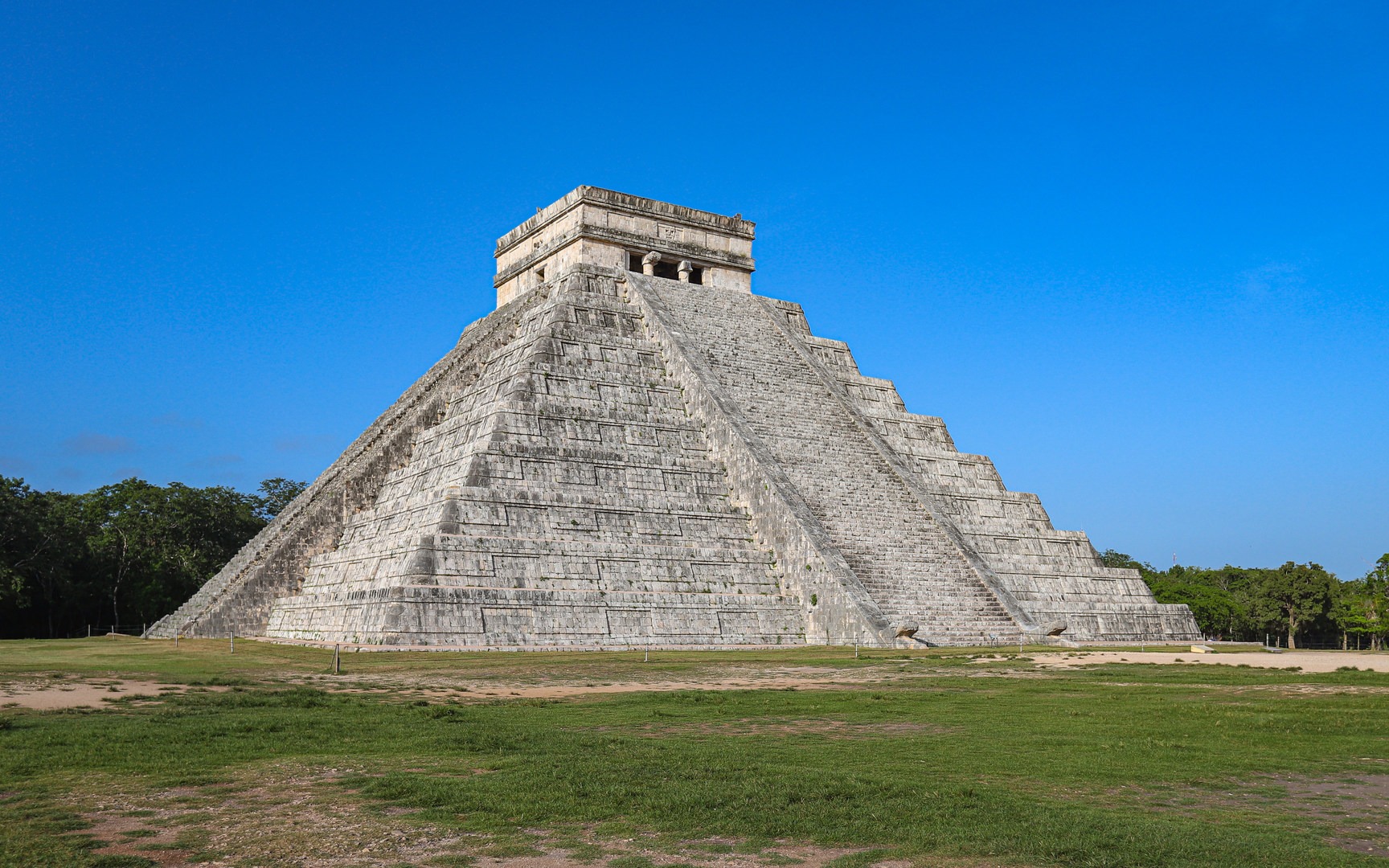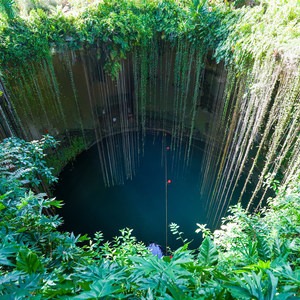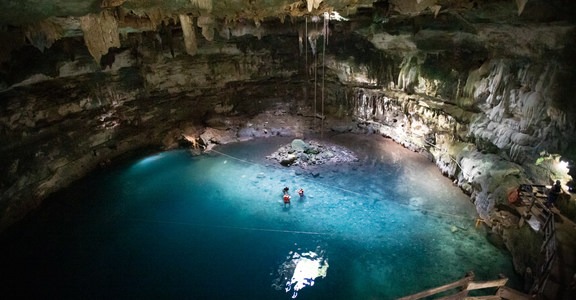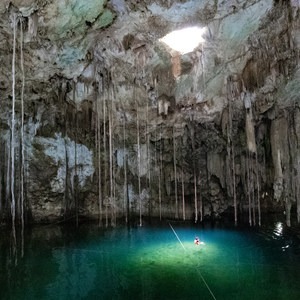You are here
At one time being among the largest of the Mayan cities, Chichén Itzá experienced its peak of importance between the years AD 600 to 900. Now the archaeological site is a UNESCO World Heritage Site and one of Mexico's most visited archaeological sites.
The grounds of Chichén Itzá are spacious, with about 5 square kilometers uncovered and preserved, making up the core of the former city. Outside of this area, there are many more structures stretching an unknown distance outward that have not been uncovered.
Chichén Itzá contains some of the most spectacular preserved ruins of past Mayan cities, with El Castillo, also known as the Temple of Kukulcán, dominating the horizon upon entering the archaeological area. The temple was built at the nexus of four cenotes, which are believed to have played a significant religious and functional role in the city. The 11th-century temple was also positioned in relation to solar orientation.
There are other sizeable and notable examples of architectural styles in areas loosely categorized by period of construction. Among these are the largest and best preserved ball court in ancient Mesoamerica, carved and etched columns and motifs, and elaborate mosaics on the facades of many of the buildings and structures.
Preservation efforts at Chichén Itzá are ongoing.
Visitors enter the grounds through a large entryway. Craft vendors line the road to the parking lot (there is a fee of MX$80 to park at the site), as well as the area outside of the entrance and many of the walkways on the site grounds. The entrance building has food and drinks for a sale, ATMs, and operates as a meeting place for guides. Once inside, guests should be prepared for a good amount of walking between the different areas of the site.
Chichén Itzá is open daily from 8 a.m. to 4:30 p.m. The entrance fee is MX$480 per person. There is an additional charge for filming or tripod use.
Logistics + Planning
Current Weather: Powered by Dark Sky

































Comments
Sign In and share them.